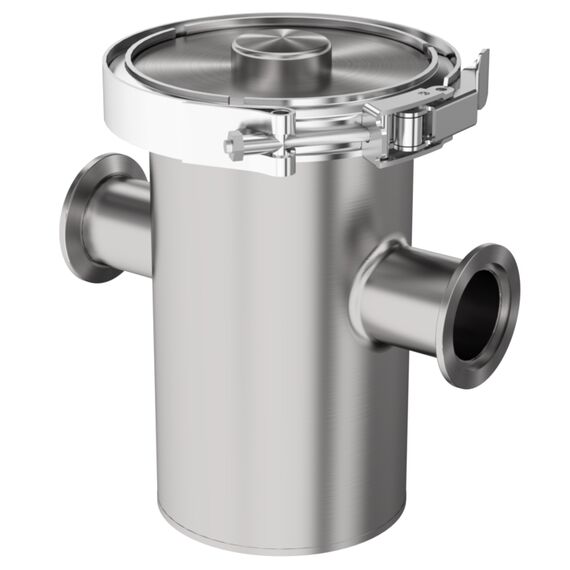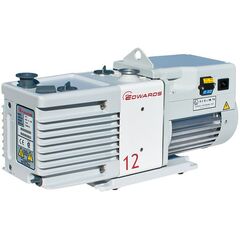These mini degassing vacuum chambers are made of corrosive resistant 304 stainless steel and have an internal volume of 0.044 cubic feet (1.25 liters). Designed with internal TIG welds, being leak tight and suitable for many applications including research and development. They include a stainless steel band clamp, 2 KF-40 flanged vacuum rated evacuation ports, Viton centering ring, and can reach vacuum pressures down to 10-3 Torr (30 inHg). Many custom sizes and varieties of vacuum chambers with vacuum pumps, pressure gauges, and connections are offered by Ideal Vacuum, please call us at for more information.
Background On Vacuum Degassing Chambers For Parts Casting
Degassing vacuum chambers are often used in the process of casting parts made of epoxy or polyurethane type materials (for example plastic type resins such as Smooth Cast). During the manufacturing process, two halves of a silicone rubber model are often made around the part that is to be reproduced. Once the silicone rubber model is set up the part being copied is removed from the model and the resin is poured into the model to cast the new replicated part.
Vacuum degassing is often used during the process of making the silicone rubber mold. In this process silicone rubber is mixed with a catalyst material. The thick viscosity of the liquid silicone rubber causes air to be mixed into it while the catalyst is being added. In many cases, the catalyst is a lower viscosity material that will tend to sit on top until stirred in completely. After mixing is complete the liquid silicone rubber is often absolutely filled with trapped air bubbles.
The next step is to put the pot of silicone rubber into the vacuum degassing chamber to remove air bubbles before it is poured over the part to make the mold. Instantly as the vacuum pressure starts to fall the pot of silicone starts to rise and foam as it is evacuated in the degas chamber. The trapped air bubbles are expand taking up a much greater volume in the silicone rubber as the pressure continues to decrease. The silicone pot will continue to expand until the point called self-collapse were the bubbles all seem to rapidly burst allowing the trapped air to escape and the degassed liquid silicone rubber falls to the bottom of the pot. The degas chamber is vented as step one of degassing the silicone rubber is complete and the rubber is then poured over the part to be replicated and allowed to cure to create the mold.
Once the two halves of the silicone rubber model are completed and cleaned they are assembled being ready for the resin casting process. The resin is typically a two-part plastic type material, for example, Smooth-Cast which is a casting compound consisting of two liquid prepolymers that can be mixed and cured to form a durable plastic. Air bubbles can also get trapped into the resin by air inclusion during the mixing process which hardeners together with the resin. Air inclusion can also occur from air trapped in molds or air trapped due to improper casting and molding techniques. Bubbles can also be caused by volatile components being stripped out of the materials while casting under vacuum or gasses generated during the reaction (hardening) process.
Degassing of resins is commonly done after the resin is poured into the mold. One major obstacle is to prevent air from getting trapped in casting recessed pockets and small features. Fine surface details and undercuts on the part can often have trapped air and not get filled completely with resin. This will leave the part undercut of some fine surface details. One trick is to include vent holes in the mold so the resin flows upward pushing out the trapped air. It is impractical however to add vent holes every as it would take forever to make the part. This is where large diameter and long vacuum degassing chambers becomes very important for increasingly complicated part fabrication.
It is also important to have the proper sized vacuum pump to pull vacuum quickly on the resin to remove the trapped air bubbles. This is most important for highly reactive resin materials, such as, fast reacting polyurethanes or water clear polyurethanes. These resins have a short pot life which require a larger volume vacuum chambers and faster-pumping speed vacuum pumps to degas quickly as the parts will start to set up and harden (start to cure). It is important to remove the trapped air bubble quickly during the short working time of these resins. The opposite tends to be true for silicon-based resin compounds which tend to be much less reactive and therefore have a longer pot life.
Ideal Vacuum can design and build custom degassing chambers, call our office at for more information.
No reviews found












